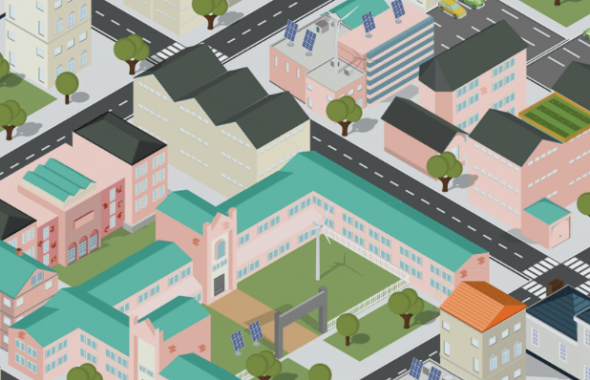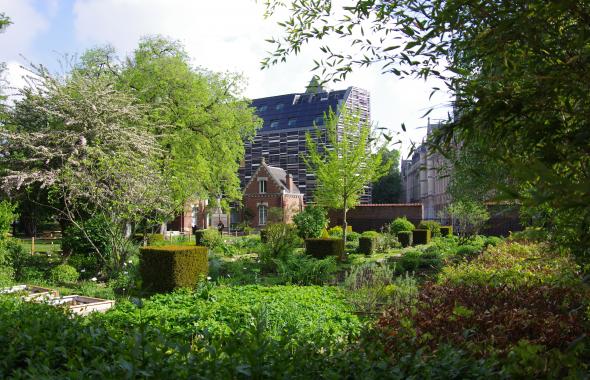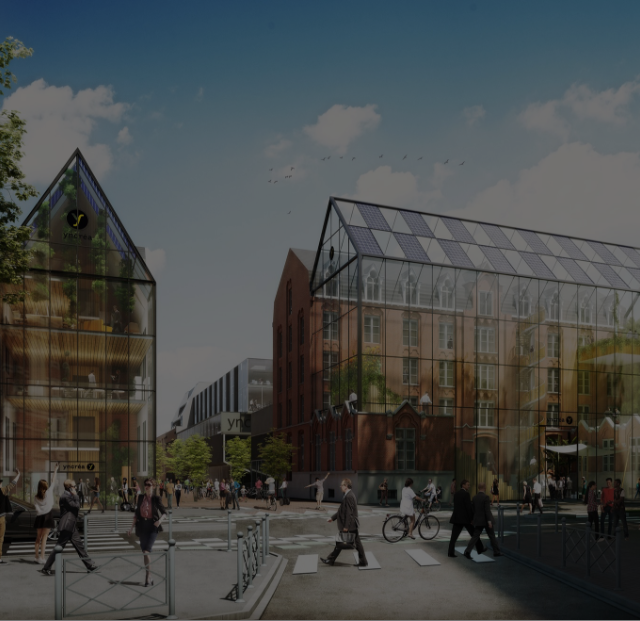Live TREE is an initiative of the Université Catholique de Lille and its establishments. Through their collective efforts they accelerate the pace of the energy and social transition. A dozen demonstrator projects are in development around campus, concerning energy, mobility, and even the urban landscape.

What are they?
A demonstrator is at once a functional and equipped environment (a building, a plot of land, an apartment, a greenhouse, a whole district…) and a community of users: researchers, students, professionals, locals, designers, start-up creators, the general public… Their presence in one place enables exchanges, thus creating a surge of new, well thought-out solutions in order to be more useful and well-considered.

What can you do there?
This is where researches, tests and life-size projects on certain themes are directed: urban agriculture, Research, testing, and full-scale projects take on themes such as urban agriculture, the future of trade, and smart housing. A 1:1 scale immerses each user in real-life conditions of utility and constraint. In these "living labs" one can develop a concept, refine a project, create a prototype for a product or service, test its reception, incubate a start-up ...all in real-life conditions, testing functionality or incorporating new economic models.

Who are they for?
Demonstrators are open to everyone: within their facilities, students can be educated, researchers can work, corporations can test potential solutions with actual users, and the general public can be kept up to date on new innovations, created and tested before their very eyes.
Energy, Digital technology
Renovated in 2017, the Faculty of Medicine and Midwifery building has undergone an extensive thermal renewal, with performance exceeding expectation relative to energy norms (insulation, carpentry, central air-conditioning and treatment, lighting). An energy and usage audit has been carried out and energy consumption is displayed in real time.
The Hôtel Académique is equipped with a heat regulation system which decreases the consumption without altering comfort levels. Each classroom is provided with captors cutting all heating systems as soon as a window is open. The consumption system is synced with the classroom software so it doesn’t heat up without a planned or spontaneous presence – while thermostats allow users to regulate temperatures as they see fit.
Since 2019 at the Saint Vincent de Paul Hospital, the terrathermal system has helped reduce energy consumption linked to ventilation via an innovative air-water exchanger. Heat recovery occurs through direct exchange of air and water distribution allowing greater productivity.
The Rizomm's 6500 m2 were completely renovated 2016-2018. New electrical, heating, and air-conditioning systems, along with a 1200 m2 photovoltaic power plant and dynamic management, enable the production, auto-consumption, and pooling of energy, while reducing the building's carbon footprint. The heart of a smart electrical network, the Rizomm is an object of socio-technical research and education (studies of user behaviour, 3D modelling, data usage, ...). It allows users to be fully invested in energy performance.
Buildings on campus generate and consume their own renewable energy thanks to a total of 1200 m2 of photovoltaic panels. ... The challenge is to maximise use .... To do so, the University uses a powerful solar energy storage system that conducts and prioritizes energy redistribution depending on need. Batteries recover excess renewable energy for use during peak consumption times or to charge electric vehicles.
One of the goals of Live TREE is to connect different renewable energy sources, points of consumption on campus, and means of storage by means of a smart energy network, in order to render buildings more efficient. A control centre permits energy management in real time.
A smart grid is an electrical distribution network that relies on data transfer between suppliers and consumers in order to adjust the flow of electricity in real time, allowing for more efficient management.
Alternate mobility
Live TREE encourages soft mobility and carries out work on electric mobility. University establishments are pursuing proactive policies in favor of alternative mobility, including mobility management, travel planning, rechargeable electric and hybrid service vehicles, provision of electric scooters or bicycles, bicycle repair stations, reimbursement of the bicycle travel allowance, remote working...
On campus, employees can recharge their vehicles at any of 26 stations, some of which are solar-powered.
Nature in the city
JUNIA-ISEN, the Saint Vincent de Paul hospital, and ESPAS ESTICE have all installed green walls indoors. Green walls have many virtues, even aside from their decorative aspect, such as insulation and sound proofing, and (depending on the type of plants) even pollution reduction. Plants improve air quality and significantly reduce energy consumption linked to their renewal.
The green terraces of Junia-ISA, the creative HangArt space, and soon the edible garden of ESPAS-ESTICE provide space for leisure and well-being, but are also a forward-looking response to a resilient city and objects of research into the study of urban biodiversity and the socio-environmental roles of plants (spaces for leisure and well-being, noise reduction, carbon sinks, battles against atmospheric pollution and against the island effect of urban heat, rainwater absorption, protection of biodiver-sity, and so on).
Junia is pioneering two new spaces for a future agricultural demonstrator at the Palais Rameau*:
- A miniature smart greenhouse with an Aquaponics crop production system and a “Farmbot”- a robot farmer in charge of the vegetable garden from start to finish (you can find it in the ISA building).
- Participation in the “Halle Gourmande” project at Fives Cail via a 150 m2 module demonstrating various urban farming systems and running workshops on construction and seeding for district residents.
*Projects supported by the Hauts-de-France Region.
Entrusted by the City of Lille to the Junia association for a 25 year period, the historic Palais Rameau with its house and garden space is set to become one of the most emblematic spots on the new Junia campus. Renovated and refurbished, the Palace will host co-working spaces, work rooms, catering areas, and a space designated for one-time events. The whole of it will constitute a third place and a large-scale demonstrator of tomorrow's agriculture / nutrition. The site is effectively rediscovering its original vocation: in 1878, Charles Rameau had wanted a place dedicated to horticulture and… to culture itself. The first phase of the work, beginning in the second quarter of 2021 and lasting about two years, will be dedi-cated to the rehabilitation of the Palace itself, the neighboring house, and the outdoor layout. Work on the interior fittings will follow. Its opening is scheduled for September 2023!




